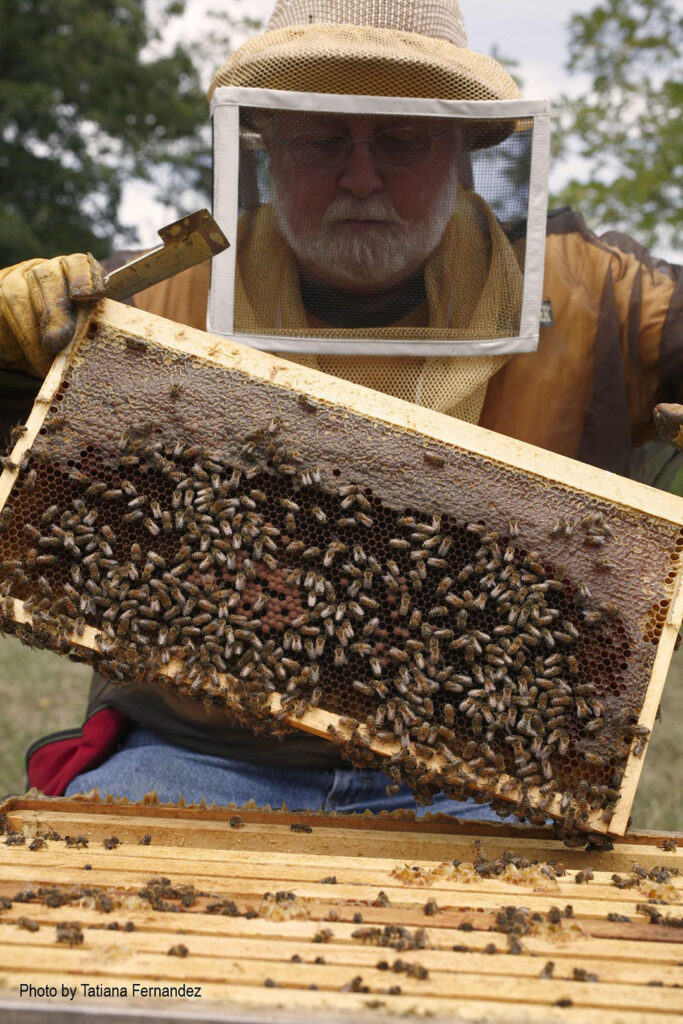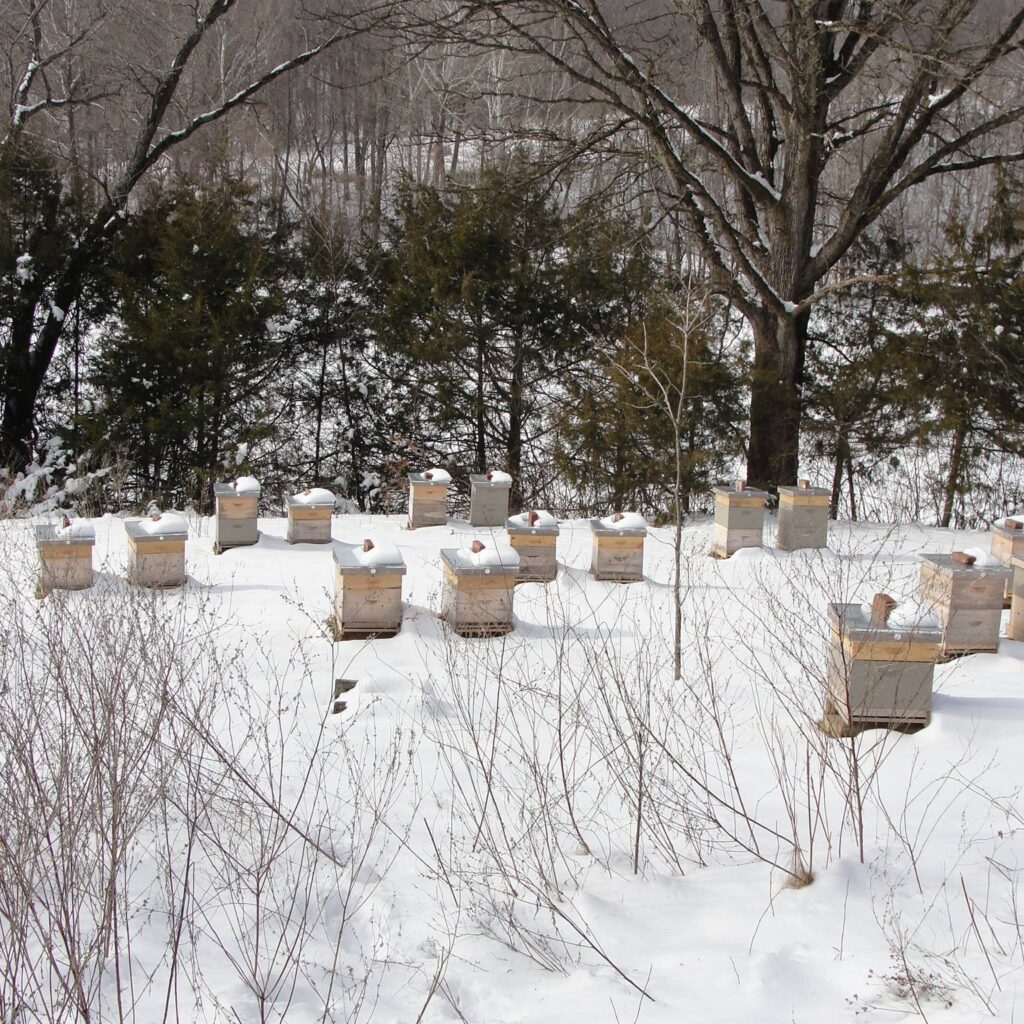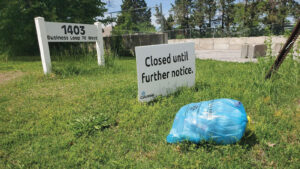Boone County beekeepers nurture hives to produce golden elixir
Our instinct is to avoid being stung, but for some the lure of honey is so strong that they steward honey bees, risking exposure to colonies of tens of thousands of bees to harvest their guarded elixir.
Indeed, when we think of local flavor, honey should be the first thing to spring to mind. While landmarks and events distinguish a destination and provide a sense of place, nothing like honey gives us a literal taste of a specific region. Thanks to beekeepers in Boone County, the age-old tradition that yields honey is alive and well. All that is needed to savor all four seasons and the flowers of mid-Missouri is to patronize local specialty stores, farmer’s markets, or beekeepers directly and enjoy the precious nectar-based delicacy.
The age range of Columbia-area beekeepers spans several decades and reflects the broad appeal of honey. Ian Appleton is not yet 20 and has already been keeping bees for five years. Veteran beekeepers Steve Moeller of Lone Cottonwood Farm and Jim Thaxter, past president of the Boone Regional Beekeepers Association, are still compelled to keep bees fifty years on.
Ian gifts his honey and sells minimal amounts as he recovers the investment cost of setting up his hives; Thaxter and Moeller have tended between sixty and one hundred hives, respectively, and sold into the local commercial market. Thaxter says that Columbia is a great place to sell honey while Moeller, who has been a Columbia Farmers Market vendor since 2017, adds, “We have a very strong demographic of people in this area that really appreciate and seek out locally produced foods. We are very fortunate.”

Honey is so irresistible that apiculture, the technical term for beekeeping, dates back thousands of years. The United States Department of Agriculture archive reports that European honey bees were shipped from England to the Colony of Virginia in 1622. By 1852, a man named L.L. Langstroth, known as “the father of modern beekeeping,” developed equipment involving standardized hives housing frames. Such equipment is still essential to the craft and used by local honey harvesters. In addition, beekeepers employ smokers to subdue the bees and wear protective apparel including ventilated suits, jackets or veils, and gloves to minimize stings.
Beekeeping is a seasonal and cyclical endeavor and largely a solitary and individual pursuit. Moeller says there’s a markedly steep learning curve as a beekeeper.
“You can’t bring a beehive to the vet. You have to have knowledge about diagnosing problems,” he explains. “Those who remain fascinated and learn a bit about bee biology, anatomy, physiology, and what makes the bees tick are the ones who are likely to remain with beekeeping.”
Thaxter agrees, adding, “A lot of people who’ve gotten involved to ‘save the bees’ thought it was easy to put out hives and they would last forever. They couldn’t understand what happened when the colony died and that you have to do some management.”
That calming buzz
While beekeeping does not require daily involvement like other animal husbandry, Moeller says he has to “stay actively engaged with the bees to see exactly what they are doing.”
Honey bees bear no resemblance to the warm-blooded mammals we are most accustomed to tending like livestock and house pets. Bees are cold-blooded invertebrate insects. Like all living creatures, though, bees act in response to their environment and inasmuch, local honey bee tenders essentially follow a four-part rhythm linked to the seasons.
Over many years, Moeller has found honey bees to be fascinating creatures while Thaxter offers, “For me, it is a calming experience to open up a hive of bees, hear the buzz, and see what the colony is doing.”
Bees live in colonies structured around a single queen in symbiotic relationships with worker and drone bees which fluctuate in number. In winter, the hive undergoes a semi-dormant period of relative inactivity during which the colony clusters for warmth and eats the honey it made. The beekeeper has little to do during this time but to ensure that the colony has enough to eat until temperatures rise and the bees take flight. Supplemental feeding may be required toward the end of winter, and hives should be closely monitored to keep the bees from starving.
Springtime means a build-up in the number of bees in the hive. Male drone bees mate with queens other than their own and live through the fall. The queen lays eggs continuously during the warm seasons in worker bee brood cycles of twenty-one days as the hive grows into the thousands. Queens can live three to four years. In spring, keepers add additional boxes or “supers” atop the beehive to provide ample space for the bees to store honey.
“One of the things about mid-Missouri is that there are a lot of blooming trees and wildflowers that the bees use to make honey,” says Moeller. These include black locust, sweet clover, and goldenrod among a bouquet of other local bloomers.
Beekeepers continue monitoring the colony as spring leads to summer and the flowering plants produce what is considered a “honey flow.” Locally, May and June are key honey production months. With a lifespan of six weeks, worker bees forage over a two- to three-mile radius — the equivalent of 18,000 acres — pollinating the vegetation that in turn provides them the nectar and pollen on which they thrive but often wearing out their wings in the process.
The honey cycles
During a plateau in mid-Missouri’s bloom cycle in late summer, local beekeepers often pull frames of surplus honey, proceeding to harvest, extract, strain, and bottle the delectable, viscous liquid of amber, gold, and saffron colors.
Autumn blooms produce a second honey flow that comes before a hard frost and local honey farmers enter maintenance mode. This season brings a natural die-off of surplus worker bees in the hive and is the time for beekeepers to gauge and leave enough honey for the overwintering colony to live on. It’s also time to verify that the hive is impermeable to mice and other critters inclined to steal the bees’ prize possession.
Two tasks for local beekeepers are both ongoing and critical. The first is to manage swarming. This natural instinct to reproduce and/or protect the colony can be a devastating loss if not initiated voluntarily by the beekeeper. If a hive is getting too crowded or falls ill, a swarm will often form and flee. Swarms can be frightening to those unfamiliar with bees.
For me, it is a calming experience to open up a hive of bees, hear the buzz, and see what the colony is doing.
Jim Thaxter, longtime Boone County beekeeper
Thaxter says, “Don’t panic. Do stay away from them. But know that when swarming, the colony is without a home and normally they sting to protect their home. Call a beekeeper and they will likely be glad to come and collect the swarm.”
In addition to the size, the health of the colony must be constantly monitored for pests and infections, especially with an eye to the threat of the parasitic varroa mite.
“That changed everything,” Moeller says of the enemy that arrived in the United States in 1987. Several methods to monitor and treat for them were deemed safe by the United States Department of Agriculture and are used by most Columbia beekeepers today.
Impacts on habitat, but not endangered
Non-native honey bees are far from alone in creating a buzz in the air. The Missouri Department of Conservation reports 425 native species of bees in the state. While all bees are pollinators, most native bees have a modest forage area and short lifespan compared to honey bees.
“Habitat destruction has impacted the native bees quite a lot,” says Thaxter.
Moeller is optimistic about the vigor of honey bees and asserts that “they are not endangered and they are not in danger of becoming endangered.” This is good news as honey bees play an important role in pollinating some of agricultural food crops including fruits and berries, and forage crops such as clover and alfalfa.
Since beekeepers in Missouri are not required to register with the state Department of Agriculture if they are selling pure honey, exact statistics on this community and the total volume of honey being harvested in Boone County are elusive. Lone Cottonwood Farm provides one example as Moeller currently maintains thirty to forty production hives in three locations and yields about seventy pounds of honey per hive.
Clayton Lee, past president of the Missouri State Beekeepers Association, notes, “Beekeepers with a good location of flowers blooming and nectar flowing could average one hundred pounds per colony.” To find such producers, the Columbia Farmers Market features about a half-dozen honey vendors selling their crops. Other local honey outlets include Clovers Natural Market, Pierpont General Store, A&Y Global Market, and Helmi’s Gardens.
The Boone Regional Beekeepers Association, which acts as the hub of communal activity in the craft, offers a beginning beekeeping course each winter open to about thirty-five interested participants. Experienced beekeepers enthusiastically volunteer to serve as mentors for newcomers to help shorten their learning curve. Carl Korschgen, a member of the association’s advisory team, reports that the current membership roster has about 120 beekeepers. Monthly meetings often find twenty to thirty members in attendance connecting and comparing notes.
Locals keen on learning about honey bees and beekeeping can turn to several helpful resources. Beyond the Boone Regional Beekeepers Association, University of Missouri Extension offers three levels of beekeeping curriculum; beekeeping classes are offered periodically through Daniel Boone Regional Library affiliates; the Columbia Farmers Market facilitates activities for children on World Bee Day in May; local 4-H groups are involved in beekeeping; and the Missouri State Beekeepers Association is a pillar of education and awareness.
Further information can be found in publications including the American Bee Journal and Bee Culture Magazine and a myriad of YouTube videos exist to find out what the buzz is all about.










